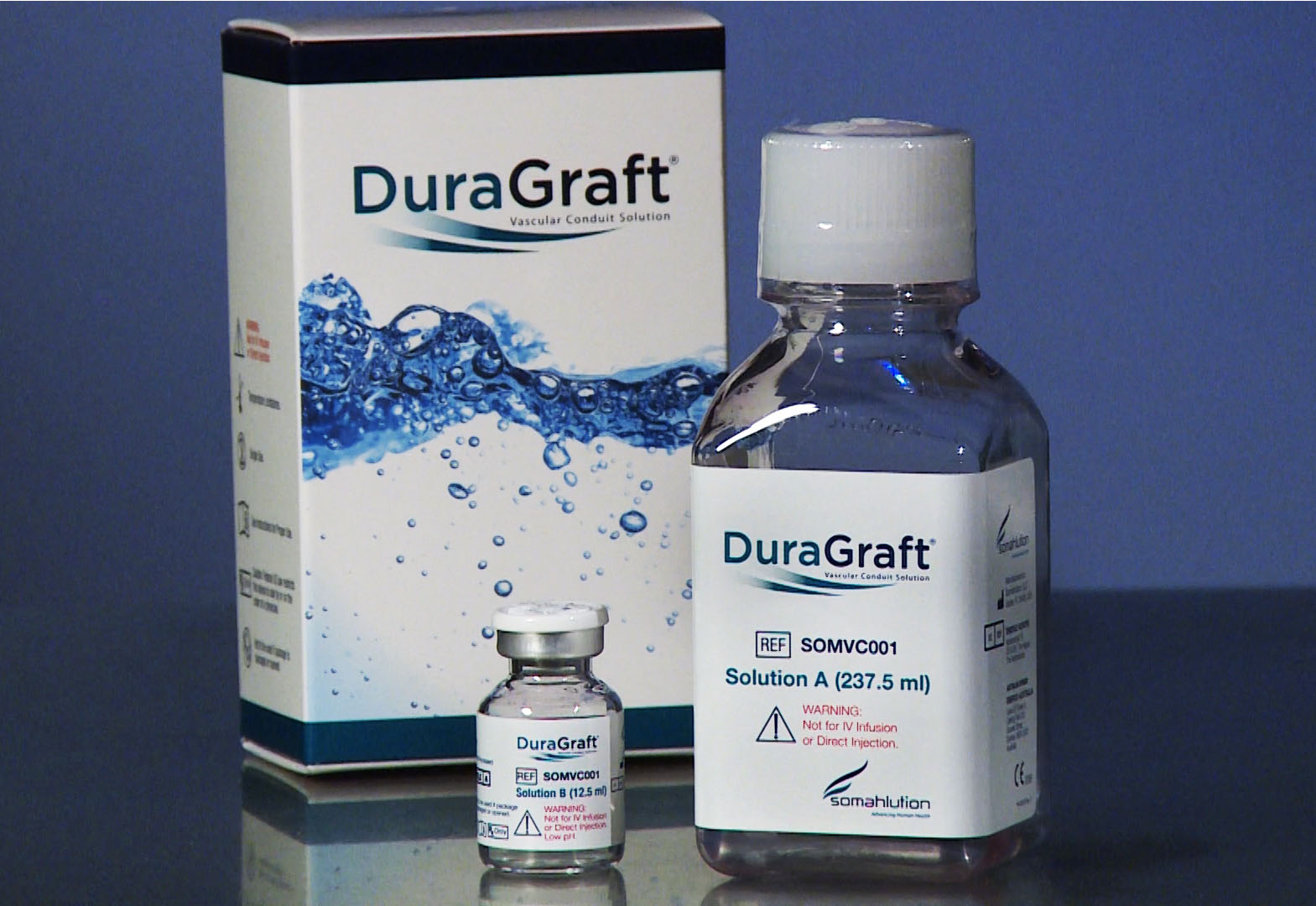Somahlution recently released results of a study on long-term outcomes in procedures using their vascular graft treatment product, Duragraft. The company, based in Jupiter, Florida, is celebrating the highly encouraging results, with CEO Satish Chandran arguing it shows that DuraGraft “has the potential to change the bypass surgery landscape.”
To get more information about the new findings related to DuraGraft, Surgical Products interviewed the lead investigator on the study, Miguel Haime, MD.
To start with, can you tell us what’s unique about the DuraGraft vascular graft treatment?
DuraGraft is a first-in-class intraoperative vascular graft treatment designed to prevent vein graft failure after coronary artery bypass grafting (CABG).
CABG is the standard of care for multi-vessel coronary heart disease and during this surgery, we use saphenous vein grafts as bypass conduits for surgical revascularization. Pathophysiological changes that occur in vein grafts during the surgical procedure can compromise the durability and patency of the graft and increase the risk of vein graft failure. DuraGraft is designed to prevent this graft failure.

You recently presented on a new study involving DuraGraft used in coronary artery bypass grafting surgery. What were the particulars of the research?
We presented results from a retrospective, non-randomized study at the European Association for Cardio-Thoracic Surgery (EACTS) annual meeting. We conducted the study to evaluate the Real World Evidence of DuraGraft.
In a total of 2,436 consecutive patients who underwent CABG surgery with at least one saphenous vein graft, treatment of grafts with DuraGraft was associated with statistically significant lower risks for non-fatal myocardial infarction, repeat revascularization, and a composite of all major adverse cardiac events (MACE) over 12+ years of patient follow up.
What were the main takeaways from the study?
Results showed the risk of myocardial infarction beginning as early as 30 days following surgery was reduced by 36 percent. This treatment effect on myocardial infarction rate was even more pronounced beginning at three years following surgery, with an adjusted risk reduction of 50 percent. DuraGraft treatment also provided 38 percent long-term reductions in the need for repeat revascularization and a 29 percent reduction in the occurrence of MACE.
How do you envision this research and this product changing surgery as we move forward?
The study emphasizes the notion that preserving graft viability is a key element in successfully reducing vein graft failure post-CABG, and this is what DuraGraft treatment accomplishes. These results provide further supporting evidence indicating the importance of graft treatment during surgery and its potentially significant role in reducing graft failure for thousands of CABG patients each year.
DuraGraft is the first commercial product based on the GALA technology platform that is licensed by a global biotechnology company, Somahlution, from the U.S. Department of Veterans Affairs. The technology has the potential to reduce the burden of ischemia reperfusion injury in other surgical indications including tissue grafting and organ transplant.
Anything else you’d like to add?
DuraGraft treatment was launched in Europe and other global markets in 2015 for CABG and peripheral bypass operations. However, it is not currently commercially available in the U.S. We hope that it will be FDA-approved soon to be able to treat vein grafts and prevent graft failure.




